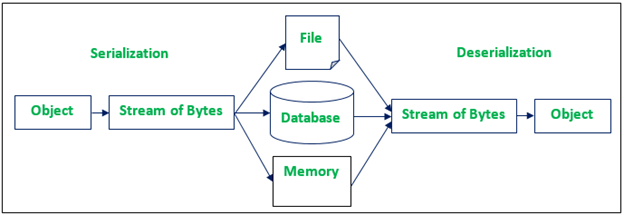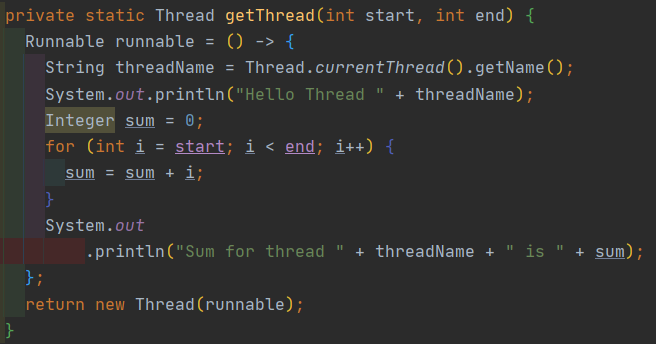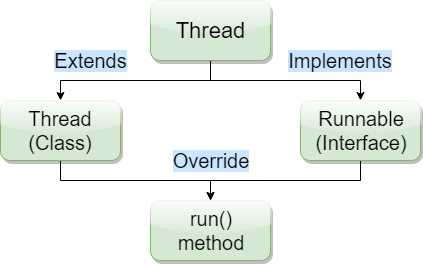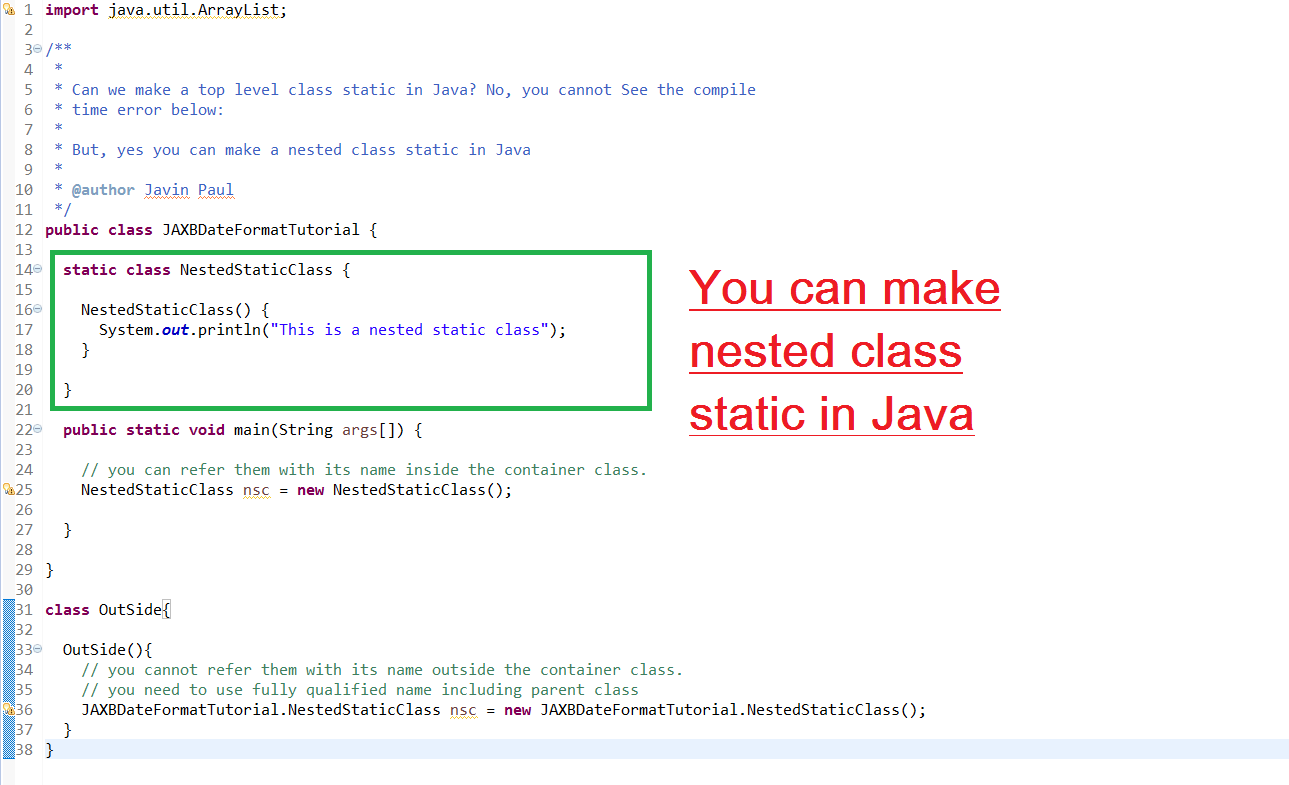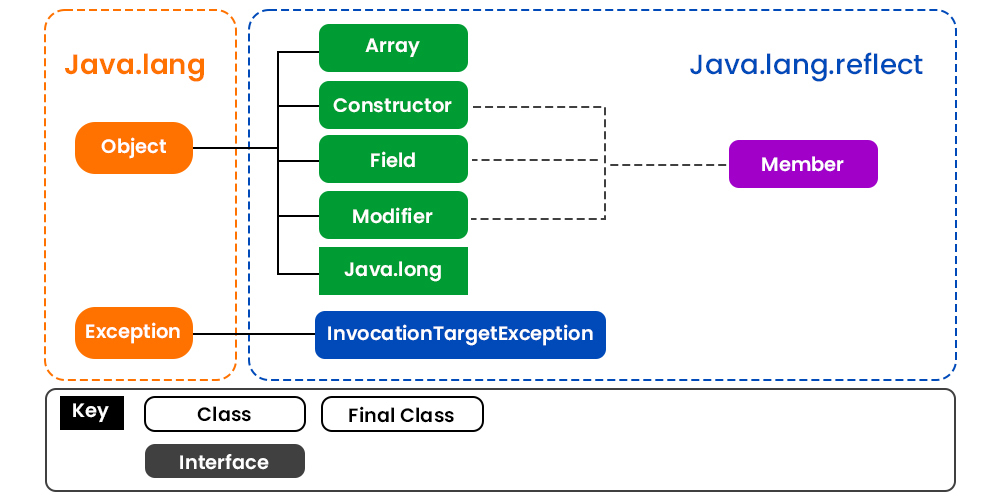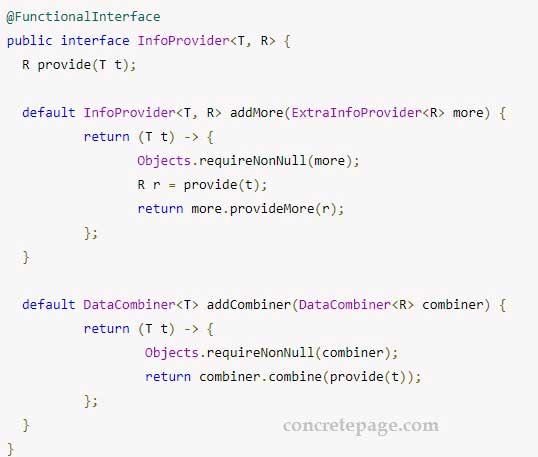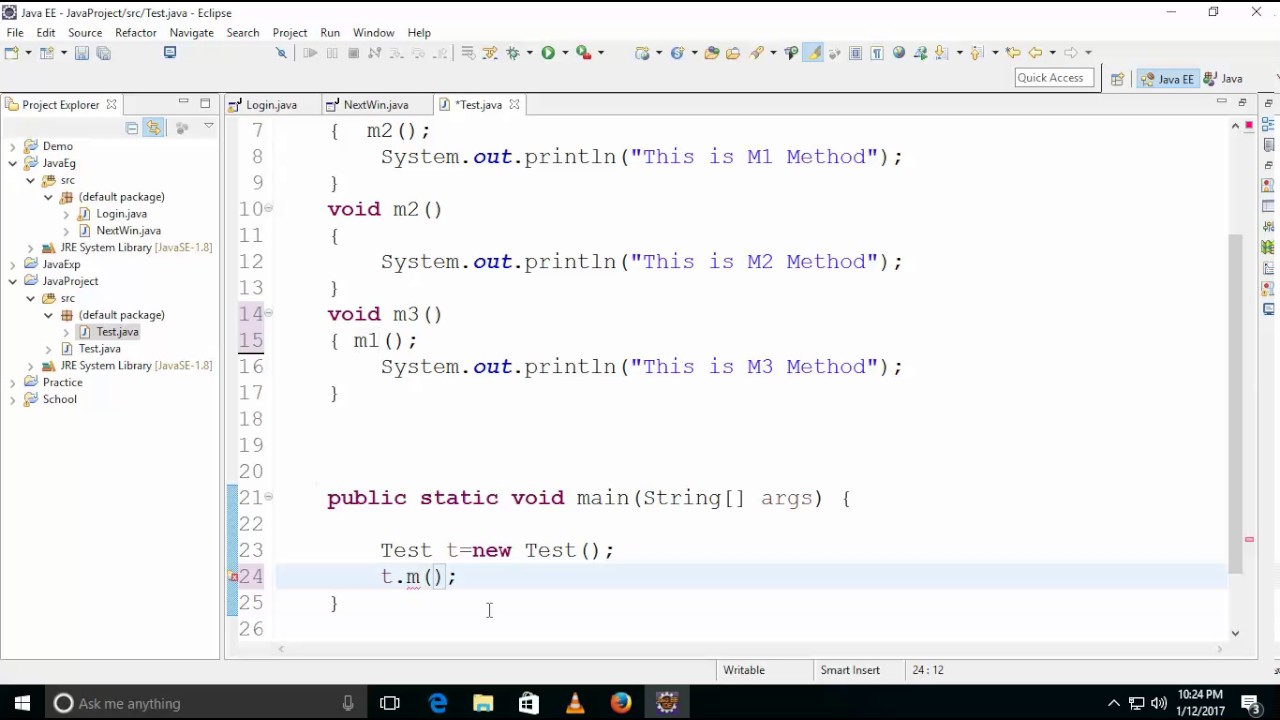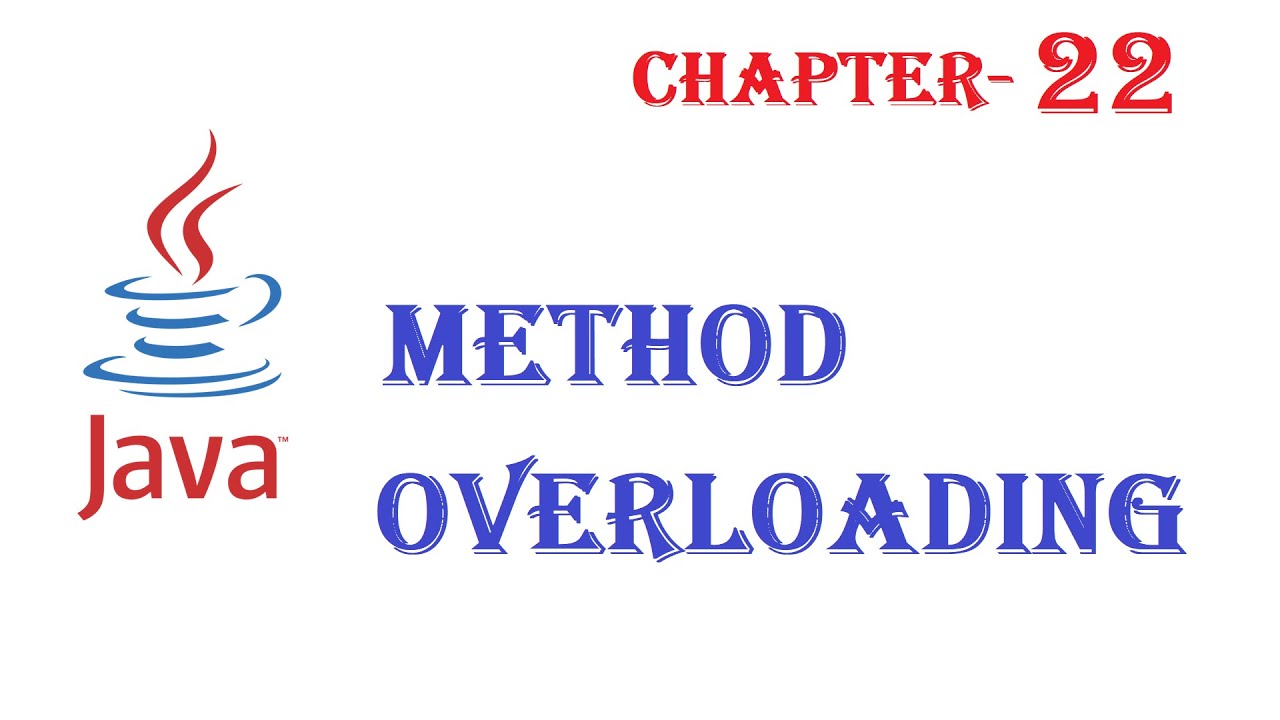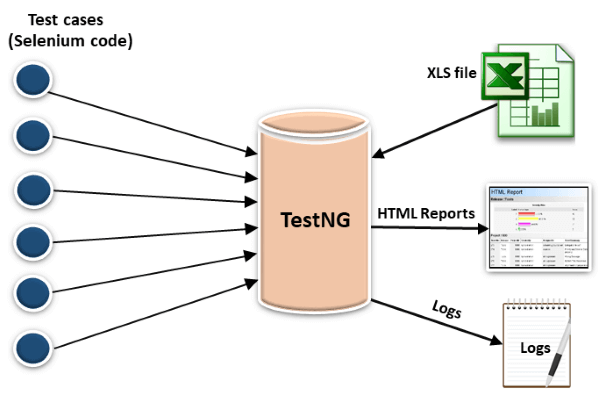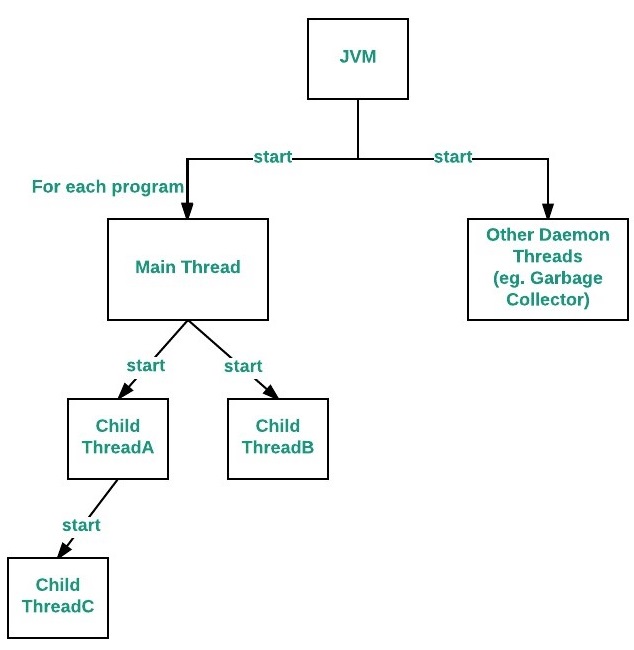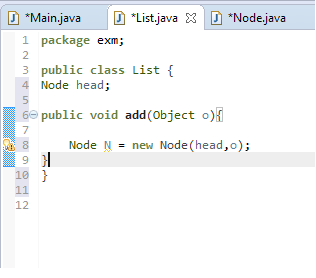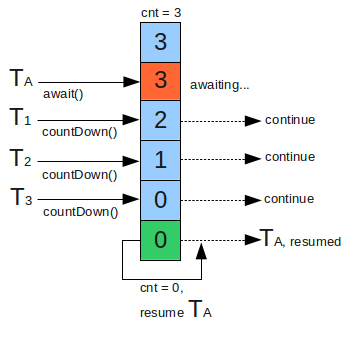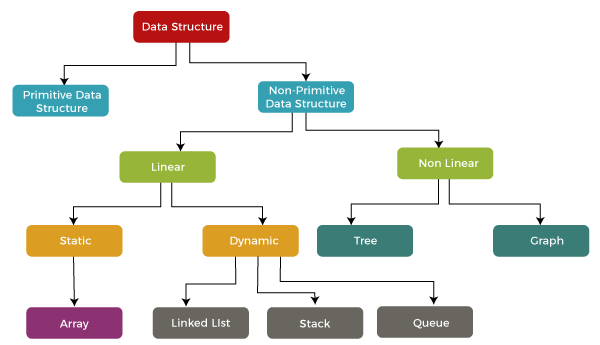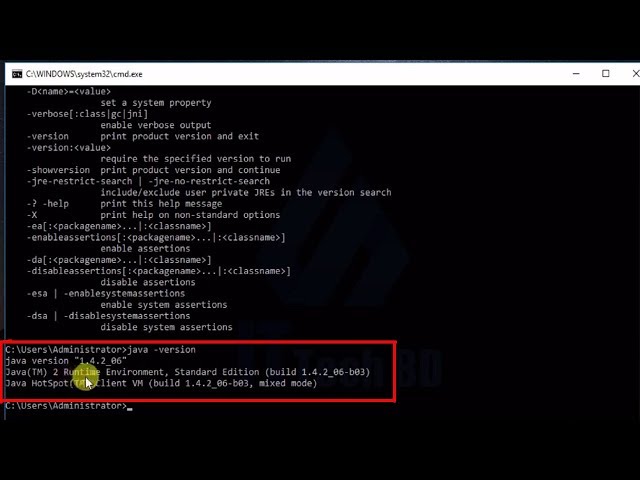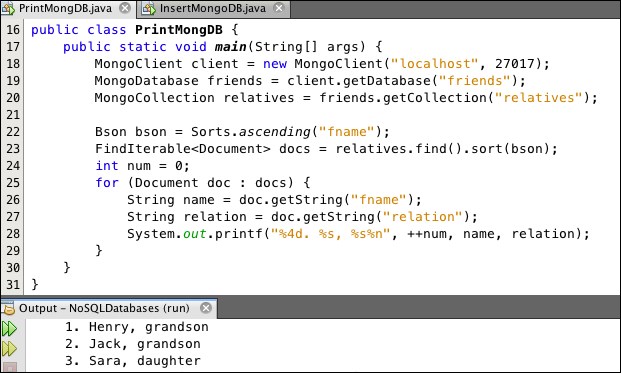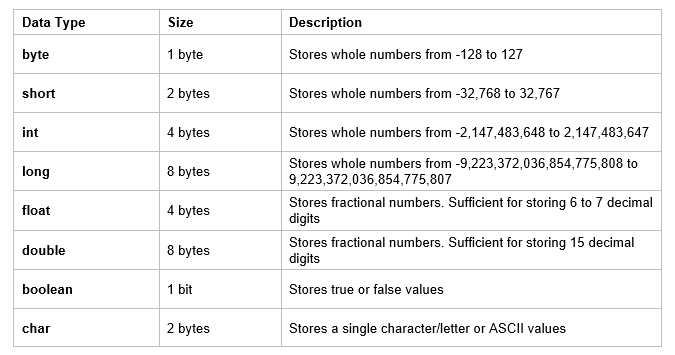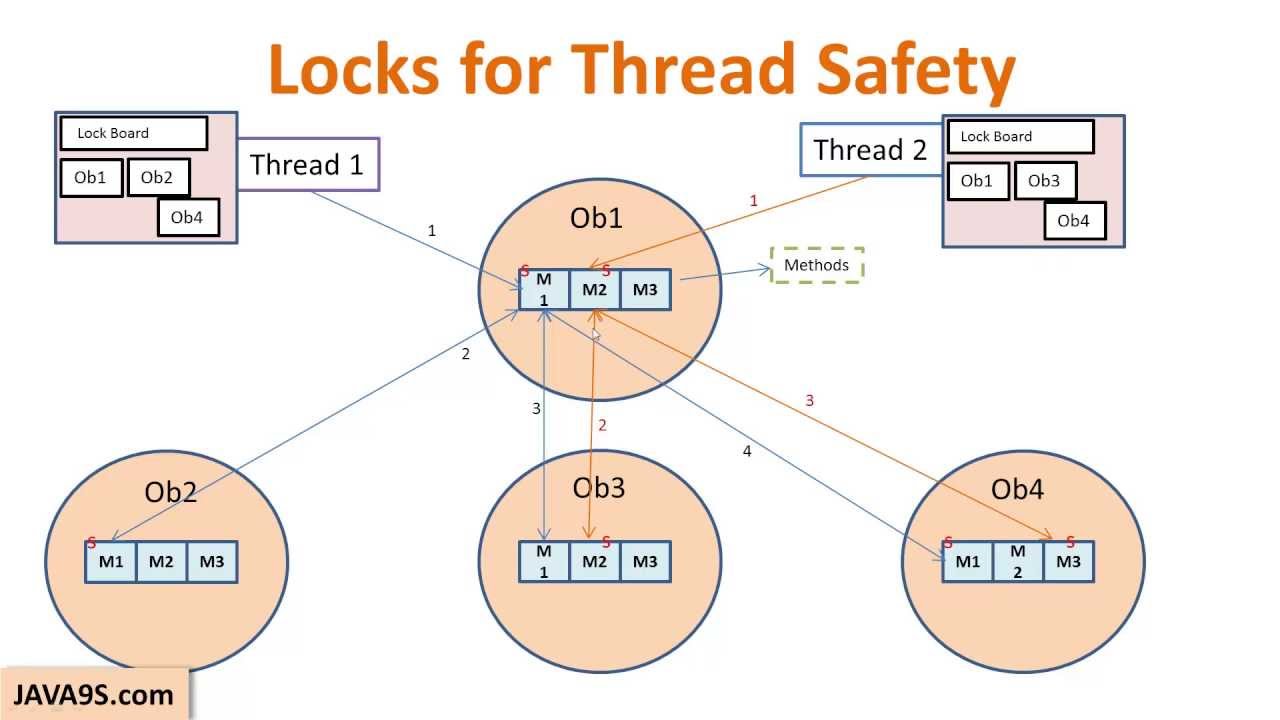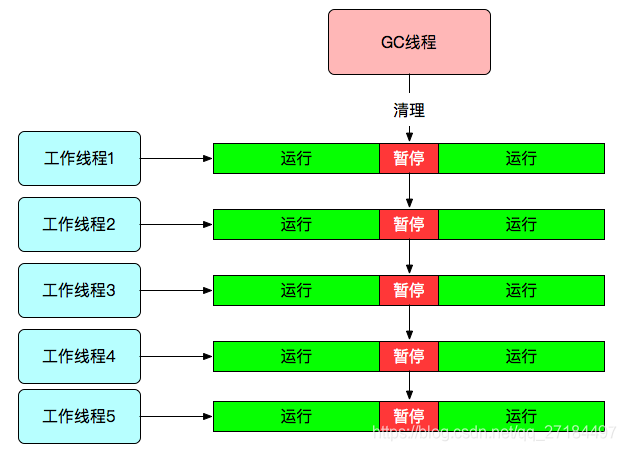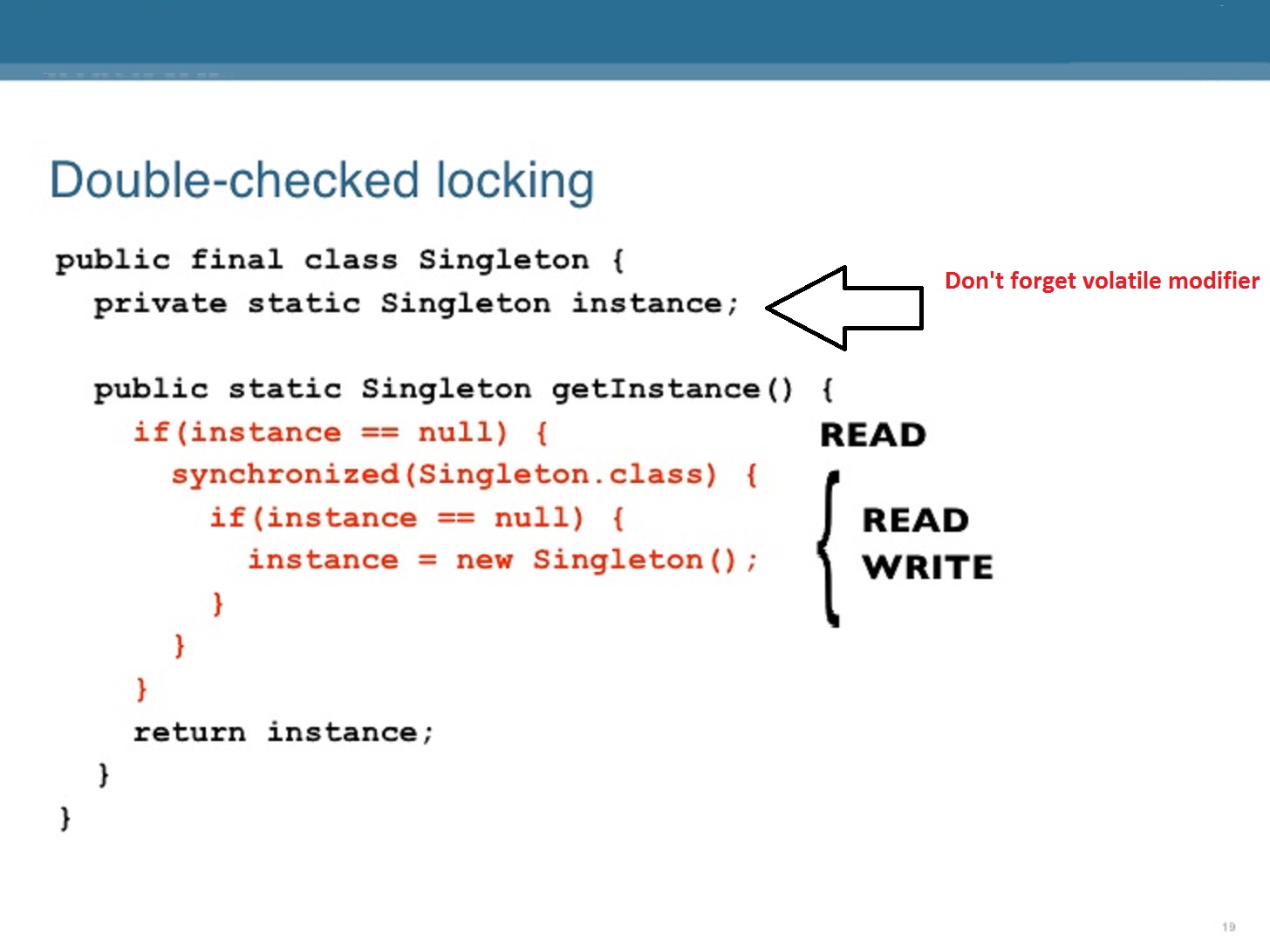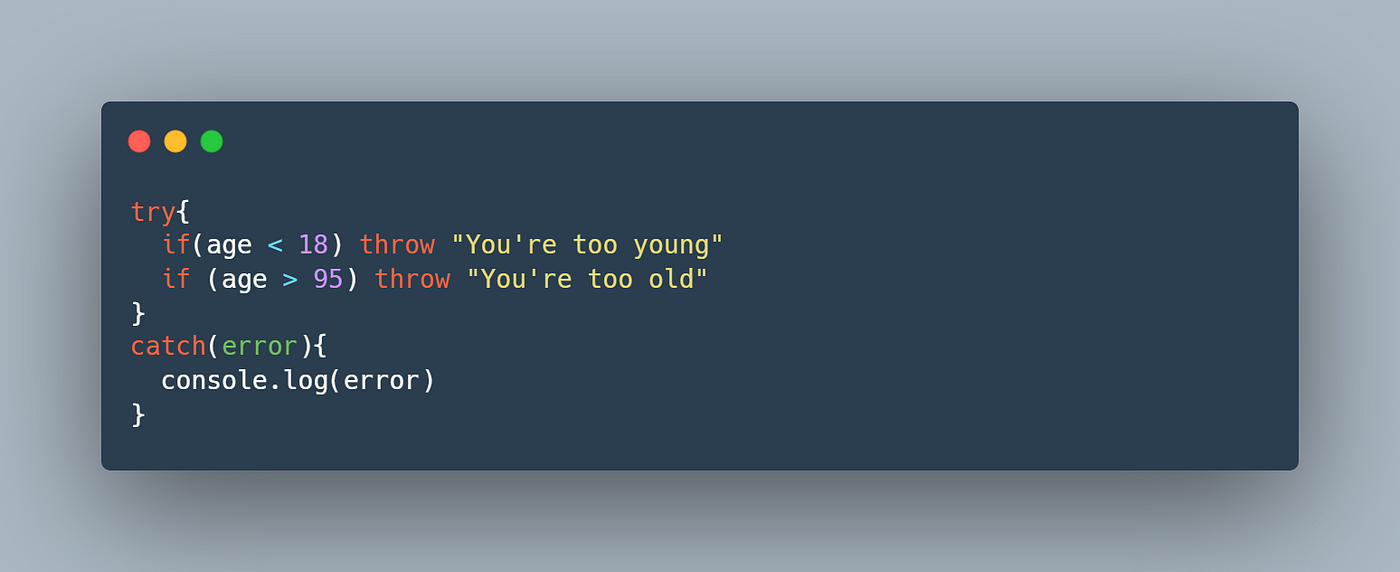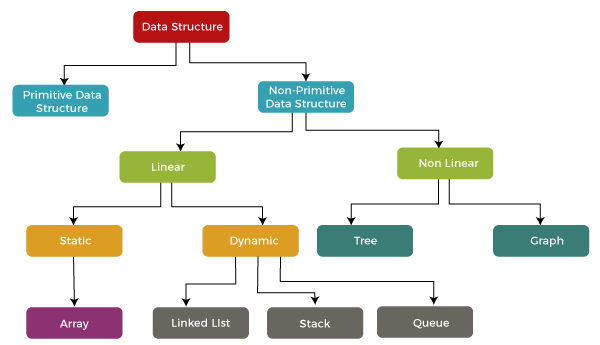Constructor overloading in Java
Constructor overloading in Java
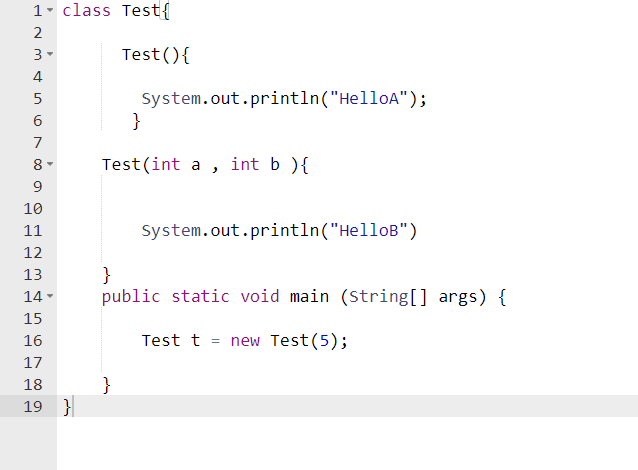
I'll respond in English for this specific request.
Constructor Overloading in Java:
In Java, constructor overloading is a feature that allows you to create multiple constructors with different parameter lists within a class. This means that you can have several constructors with the same name as long as they take different numbers or types of parameters.
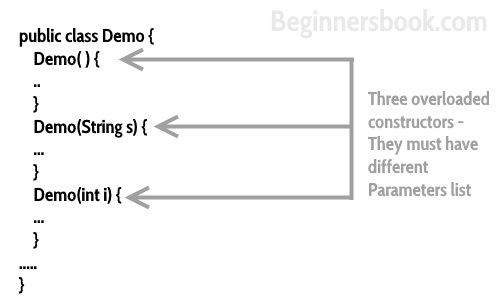
Here are some key points about constructor overloading:
Multiple Constructors: You can define multiple constructors in a Java class, but they must differ in the number or type of parameters. Same Name: Although you can have multiple constructors with the same name, each one needs to be unique based on its parameter list.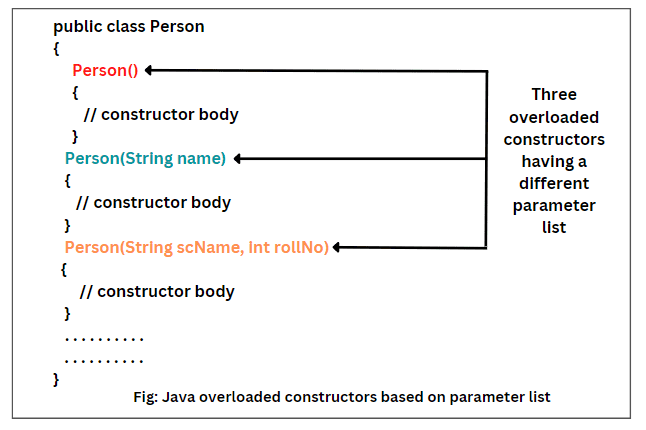
() and can contain multiple parameters separated by commas. For example: public Person(String name, int age). Object Initialization: When you create an object of a class that has overloaded constructors, you must specify the correct constructor to use when instantiating the object. This is done through the parameter list in the constructor call.
Here's an example of how you might use constructor overloading:
public class Person {
private String name;
private int age;
// Constructor with no parameters (default)
public Person() {
this.name = "Unknown";
this.age = 0;
}
// Constructor with a string and integer parameter
public Person(String name, int age) {
this.name = name;
this.age = age;
}
}
// Instantiating objects
Person person1 = new Person(); // Calls the default constructor
Person person2 = new Person("John", 25); // Calls the overloaded constructor with two parameters
In summary, constructor overloading is a powerful feature in Java that allows you to create multiple constructors with different parameter lists. This enables you to have more control over object initialization and provides greater flexibility when creating objects.
I hope this helps!
Method overloading and method overriding in Java
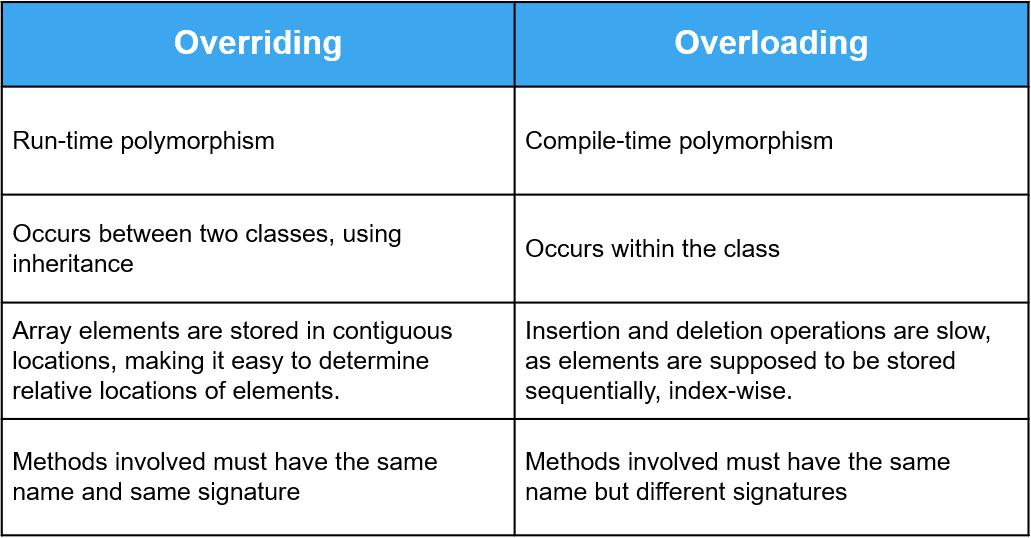
I'd be happy to explain method overloading and method overriding in Java!
Method Overloading
In Java, method overloading is a feature that allows multiple methods with the same name to coexist in a class, as long as they have different parameter lists. This means that you can define multiple methods with the same name, but with a different number of parameters or with different data types for those parameters.
For example, consider a Calculator class that has two methods named add: one that takes two integers and adds them together, and another that takes three integers and calculates their sum:
public class Calculator {
public int add(int x, int y) {
return x + y;
}
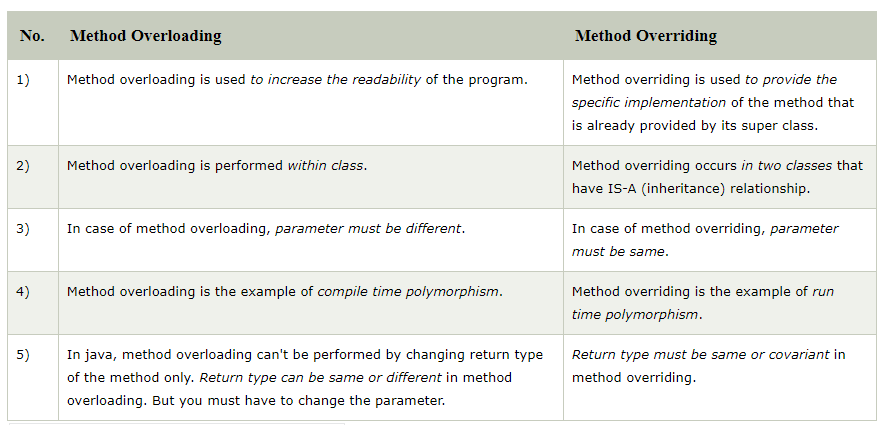
public int add(int x, int y, int z) {
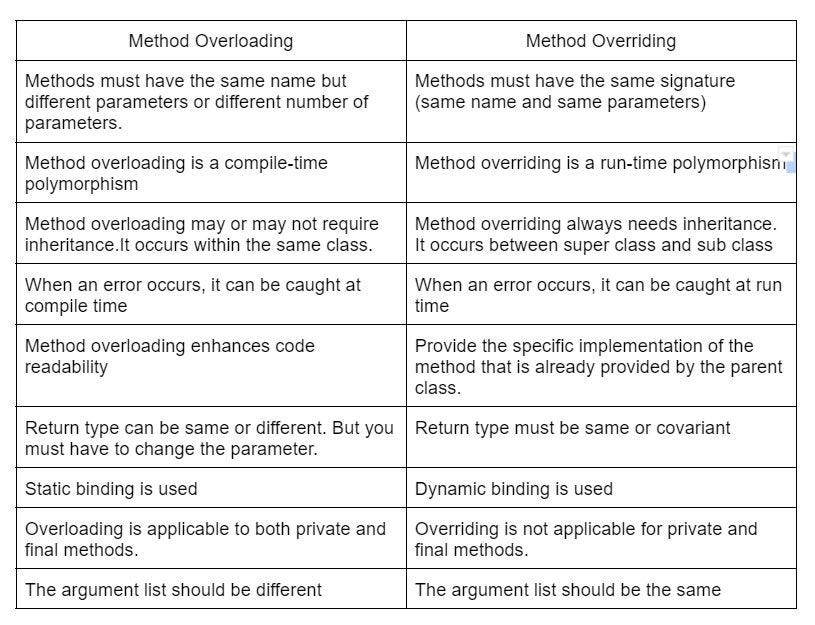
return x + y + z;
}
}
In this case, the add method is said to be overloaded. The Java compiler uses the number of parameters to distinguish between these two methods.
When you call a method with the correct number and types of parameters, the compiler will choose the correct method based on the signature (method name and parameter list). In this example:
Calculator calculator = new Calculator();
int sum1 = calculator.add(2, 3); // Calls the first add(int x, int y) method
int sum2 = calculator.add(2, 3, 4); // Calls the second add(int x, int y, int z) method
Method Overriding
Method overriding is a feature that allows you to provide alternative implementation for methods in a subclass. In other words, it's a way to "override" or replace the behavior of a superclass method with your own custom logic.
In Java, when you override a method, you must use the same method name, return type, and parameter list as the original method (but the access modifier can be different). This ensures that any code that called the original method will still work correctly after the class hierarchy changes.
Here's an example of overriding a method:
public class Animal {
public void sound() {
System.out.println("The animal makes some noise!");
}
}
public class Dog extends Animal {
@Override
public void sound() {
System.out.println("Woof woof!");
}
}
In this example, the Dog class overrides the sound method of its superclass Animal. Now when you create a Dog object and call the sound method:
Dog myDog = new Dog();
myDog.sound(); // Outputs "Woof woof!"
In summary, method overloading allows multiple methods with the same name to coexist in a class, while method overriding provides alternative implementations for methods in a subclass. Both features enable you to write more robust and reusable code!

